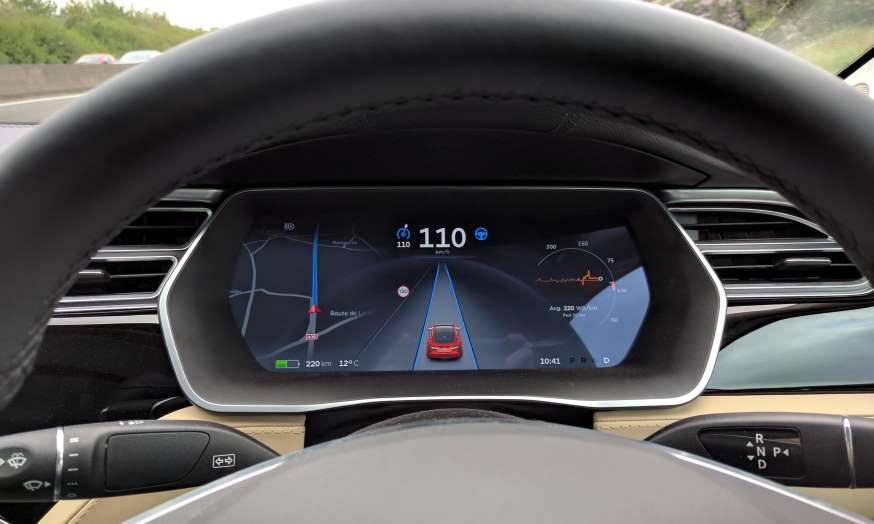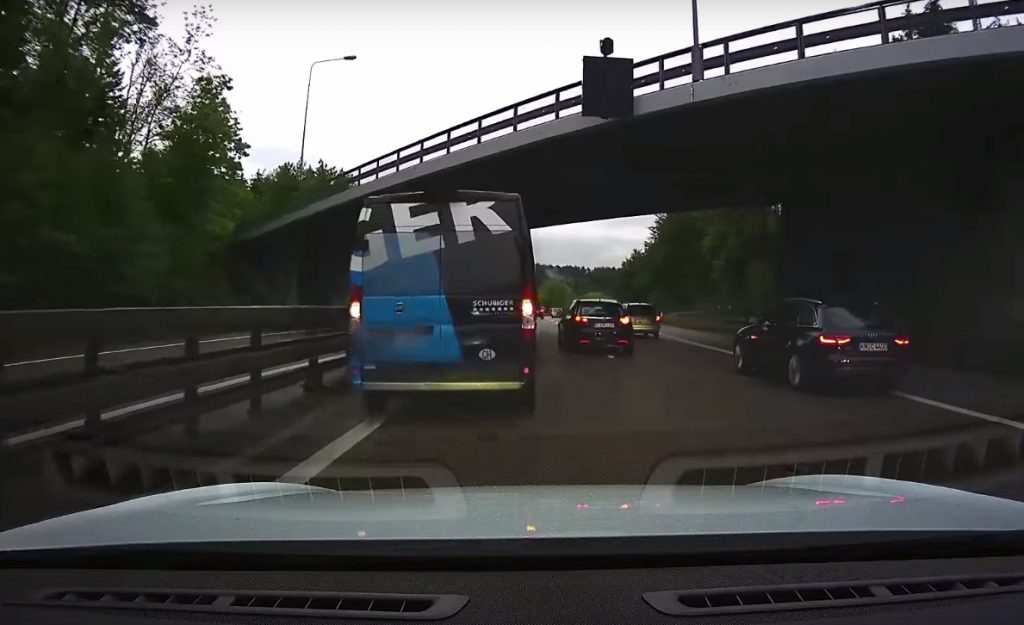News
Do autonomous cars make us worse drivers?
Autonomous cars are coming. So is the first fatality associated with them. Statistically, that milestone should occur in the next 18 months. What will happen then?

On May 31, 2009, an Airbus 330 on its way from Rio de Janiero to Paris plunged from an altitude of 35,000 feet into the Atlantic, killing all 228 people on board. Just prior to the crash, the airplane was operating in autopilot mode. A reconstruction of the disaster revealed input from several sensors had been compromised by ice that caused them to give false readings. Updated sensors that were less susceptible to ice accumulation were waiting to be installed after the plane arrived in Paris.
Because of the false readings the autopilot system disengaged returning control to the pilots however the senior pilot was sleeping at the time. The two junior pilots were not as highly trained in high altitude flight as they might have been, partly because the use of machines to control aircraft under those conditions was the norm.
Faced with the unexpected, the pilots behaved poorly. At one point they are heard to say on the cockpit recorder, “We completely lost control of the airplane, and we don’t understand anything! We tried everything!” While they tried to rouse the sleeping senior pilot, the nose of the aircraft climbed until a stall was induced. Stall is the point at which the wings become barn doors instead of airfoils. The Airbus 330 dropped from the sky like a rock.
In his excellent story about the crash published on Vanity Fair, William Langewiesche offered this conclusion: “Automation has made it more and more unlikely that ordinary airline pilots will ever have to face a raw crisis in flight—but also more and more unlikely that they will be able to cope with such a crisis if one arises.”
The Tesla community has seen similar instances lately. The driver in Salt Lake City who accidentally activated Summon, causing his car to drive into the back of a truck. The woman on a freeway in California who rear ended a car that suddenly slowed in front of her. The man in Europe who crashed into the back of a van that had stalled in the high speed lane of a highway. He at least had the courage to admit his error. “Yes, I could have reacted sooner, but when the car slows down correctly 1,000 times, you trust it to do it the next time to. My bad.”
After each of these incidents, the tendency has been for many to defend the machine and blame the human. But in a recent article for The Guardian, author Martin Robbins says, “Combine an autopilot with a good driver, and you get an autopilot with, if not a bad driver, at least not such a good one.” He says that statistically, the time when a car operating in autonomous mode causes a fatality is rapidly approaching.
On average, a person is killed in a traffic accident in the United States once every 100 million miles. Elon Musk says Tesla’s Autopilot is half as likely to be involved in a collision as a human driver. That would suggest that somewhere around the 200 million mile mark someone will die as a result of an automobile driven by a machine.
Tesla has already passed the 100 million mile mark for cars driving in Autopilot mode and continues to log 2.6 million miles driven per day. Statistically speaking, the time when a self driving car kills somebody is rapidly approaching. And since most autonomous cars on the road are Teslas, the odds are excellent it will be a Tesla that is involved in that first fatality.
What will happen then? Robbins goes back in history to look for an answer to that question. In 1896, Bridgit Driscoll became the first person in England to be killed by a motor car. The reaction among the public and the press was a fatalistic acceptance that progress will have a price. Within a few years, the speed limit in England was raised from 8 mph — which is was when Ms. Driscoll was killed — to 20 mph. This despite the fact that thousands of road deaths were being recorded on English roads by then.
Regulators around the world are racing to catch up with the explosion of new autonomous driving technology. But Robbins concludes, “By the time they do, it’s likely that the technology will already be an accepted fact of life, its safety taken for granted by consumers, its failures written off as the fault of its error-prone human masters.”
The point is that injuries and fatalities will continue to occur as cars come to rely more and more on machines for routine driving chores. But in that transition period between now and the time when Level 4 autonomy becomes the norm — the day when cars come from the factory with no way for humans to control them directly — we need to accept that complacency and an inflated belief in the power of machines to protect us from harm may actually render us less competent behind the wheel.
We will need to remain vigilant, if for no other reason than telling a jury “It’s not my fault! The machine failed!” is not going to insulate us from the legal requirement to operate our private automobiles in a safe and prudent manner.

News
Tesla FSD fleet is nearing 7 billion total miles, including 2.5 billion city miles
As can be seen on Tesla’s official FSD webpage, vehicles equipped with the system have now navigated over 6.99 billion miles.

Tesla’s Full Self-Driving (Supervised) fleet is closing in on almost 7 billion total miles driven, as per data posted by the company on its official FSD webpage.
These figures hint at the massive scale of data fueling Tesla’s rapid FSD improvements, which have been quite notable as of late.
FSD mileage milestones
As can be seen on Tesla’s official FSD webpage, vehicles equipped with the system have now navigated over 6.99 billion miles. Tesla owner and avid FSD tester Whole Mars Catalog also shared a screenshot indicating that from the nearly 7 billion miles traveled by the FSD fleet, more than 2.5 billion miles were driven inside cities.
City miles are particularly valuable for complex urban scenarios like unprotected turns, pedestrian interactions, and traffic lights. This is also the difference-maker for FSD, as only complex solutions, such as Waymo’s self-driving taxis, operate similarly on inner-city streets. And even then, incidents such as the San Francisco blackouts have proven challenging for sensor-rich vehicles like Waymos.
Tesla’s data edge
Tesla has a number of advantages in the autonomous vehicle sector, one of which is the size of its fleet and the number of vehicles training FSD on real-world roads. Tesla’s nearly 7 billion FSD miles then allow the company to roll out updates that make its vehicles behave like they are being driven by experienced drivers, even if they are operating on their own.
So notable are Tesla’s improvements to FSD that NVIDIA Director of Robotics Jim Fan, after experiencing FSD v14, noted that the system is the first AI that passes what he described as a “Physical Turing Test.”
“Despite knowing exactly how robot learning works, I still find it magical watching the steering wheel turn by itself. First it feels surreal, next it becomes routine. Then, like the smartphone, taking it away actively hurts. This is how humanity gets rewired and glued to god-like technologies,” Fan wrote in a post on X.
News
Tesla starts showing how FSD will change lives in Europe
Local officials tested the system on narrow country roads and were impressed by FSD’s smooth, human-like driving, with some calling the service a game-changer for everyday life in areas that are far from urban centers.

Tesla has launched Europe’s first public shuttle service using Full Self-Driving (Supervised) in the rural Eifelkreis Bitburg-Prüm region of Germany, demonstrating how the technology can restore independence and mobility for people who struggle with limited transport options.
Local officials tested the system on narrow country roads and were impressed by FSD’s smooth, human-like driving, with some calling the service a game-changer for everyday life in areas that are far from urban centers.
Officials see real impact on rural residents
Arzfeld Mayor Johannes Kuhl and District Administrator Andreas Kruppert personally tested the Tesla shuttle service. This allowed them to see just how well FSD navigated winding lanes and rural roads confidently. Kruppert said, “Autonomous driving sounds like science fiction to many, but we simply see here that it works totally well in rural regions too.” Kuhl, for his part, also noted that FSD “feels like a very experienced driver.”
The pilot complements the area’s “Citizen Bus” program, which provides on-demand rides for elderly residents who can no longer drive themselves. Tesla Europe shared a video of a demonstration of the service, highlighting how FSD gives people their freedom back, even in places where public transport is not as prevalent.
What the Ministry for Economic Affairs and Transport says
Rhineland-Palatinate’s Minister Daniela Schmitt supported the project, praising the collaboration that made this “first of its kind in Europe” possible. As per the ministry, the rural rollout for the service shows FSD’s potential beyond major cities, and it delivers tangible benefits like grocery runs, doctor visits, and social connections for isolated residents.
“Reliable and flexible mobility is especially vital in rural areas. With the launch of a shuttle service using self-driving vehicles (FSD supervised) by Tesla in the Eifelkreis Bitburg-Prüm, an innovative pilot project is now getting underway that complements local community bus services. It is the first project of its kind in Europe.
“The result is a real gain for rural mobility: greater accessibility, more flexibility and tangible benefits for everyday life. A strong signal for innovation, cooperation and future-oriented mobility beyond urban centers,” the ministry wrote in a LinkedIn post.
News
Tesla China quietly posts Robotaxi-related job listing
Tesla China is currently seeking a Low Voltage Electrical Engineer to work on circuit board design for the company’s autonomous vehicles.

Tesla has posted a new job listing in Shanghai explicitly tied to its Robotaxi program, fueling speculation that the company is preparing to launch its dedicated autonomous ride-hailing service in China.
As noted in the listing, Tesla China is currently seeking a Low Voltage Electrical Engineer to work on circuit board design for the company’s autonomous vehicles.
Robotaxi-specific role
The listing, which was shared on social media platform X by industry watcher @tslaming, suggested that Tesla China is looking to fill the role urgently. The job listing itself specifically mentions that the person hired for the role will be working on the Low Voltage Hardware team, which would design the circuit boards that would serve as the nervous system of the Robotaxi.
Key tasks for the role, as indicated in the job listing, include collaboration with PCB layout, firmware, mechanical, program management, and validation teams, among other responsibilities. The role is based in Shanghai.
China Robotaxi launch
China represents a massive potential market for robotaxis, with its dense urban centers and supportive policies in select cities. Tesla has limited permission to roll out FSD in the country, though despite this, its vehicles have been hailed as among the best in the market when it comes to autonomous features. So far, at least, it appears that China supports Tesla’s FSD and Robotaxi rollout.
This was hinted at in November, when Tesla brought the Cybercab to the 8th China International Import Expo (CIIE) in Shanghai, marking the first time that the autonomous two-seater was brought to the Asia-Pacific region. The vehicle, despite not having a release date in China, received a significant amount of interest among the event’s attendees.









